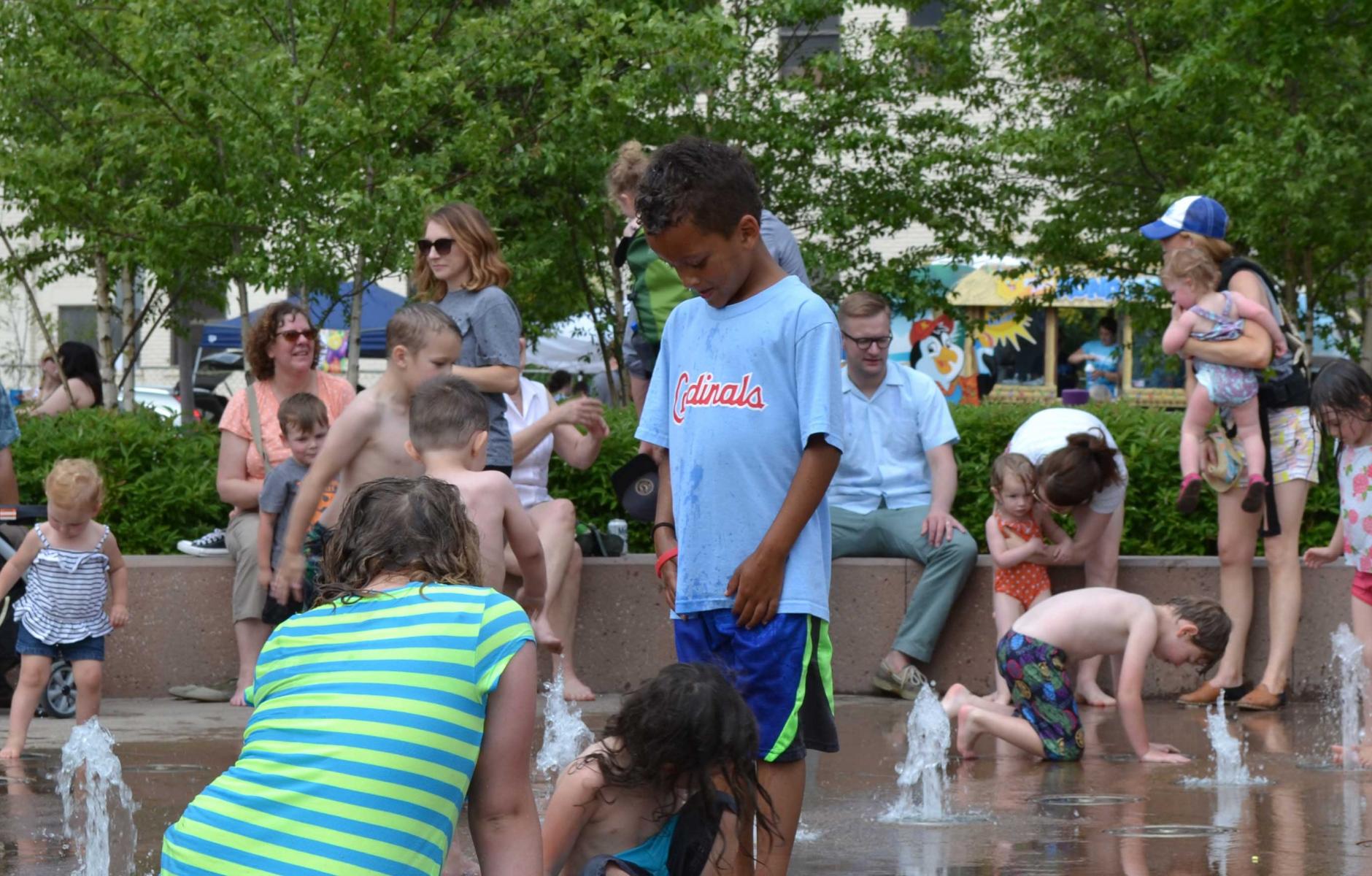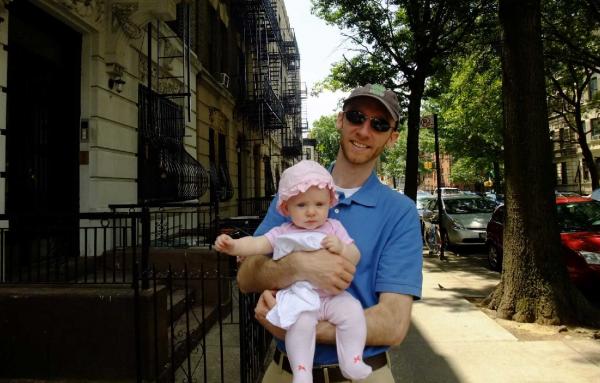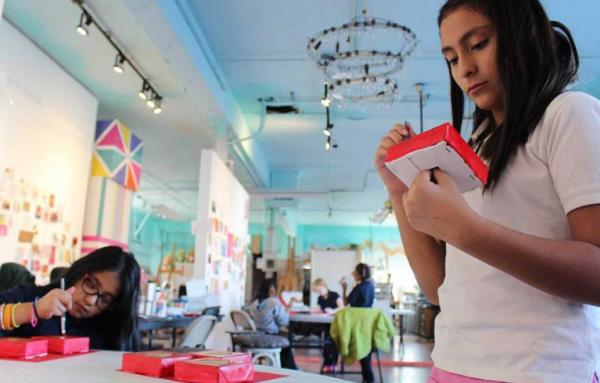
Affordable, alternative, and family-friendly urban lifestyles
In a previous post, I discussed how affordable urban living for millennial families with children is poised to become one of the largest market demands in the near future. Moreover, as these urban millennials with kids get priced out of the major metropolitan cities, they are now beginning to relocate to second- and third-tier cities, often in traditional “collar neighborhoods” on the edges of downtowns. These neighborhoods are inclusive of many or all of the desired lifestyle elements that urban millennials with children want (walkable and mixed-use with quality kid-friendly amenities, institutions, and infrastructure). Continuing with our case study of Tulsa, let’s discuss lifestyle options urban millennial families are finding in smaller second cities.
It should be noted that one of the greatest virtues of traditional, pre-war collar neighborhoods – especially those in Tulsa – is the incredibly diverse array of housing types seamlessly integrated within them.

Everything from a small 400-square-foot flat to a large manor home is compactly located side-by-side in a sympathetic manner with a cohesive mass and scale. The variety of ages and conditions both of the collar neighborhoods themselves and of the housing types within them (because these neighborhoods were built up, added to, and/or retrofitted over time) further augment the diversity of price points available within them.
Among the housing types found in Tulsa’s collar neighborhoods, the majority are small lot, small footprint single-family detached homes. The price per square foot of these units, depending on the physical condition of the property, varies tremendously. Therefore, if a millennial family with kids is willing to throw in some sweat equity and renovate, they can obtain a home in one of the more desirable collar neighborhoods without breaking the bank.
Like all material goods, however, there is a finite supply of these small single-family homes, and they are the first to get bought up as these areas become more and more attractive to urban families with children. Fortunately, the diversity of housing types found within these neighborhoods coupled with the millennial generations’ openness to creative, non-conventional living arrangements continues to provide solutions for obtaining their desired lifestyle. Let me highlight three such options that I’ve found in Tulsa’s collar neighborhoods alone that illustrate this point.
Option one is the classic Missing Middle Housing model. This is basically buying small in a great urban neighborhood, such as buying a unit within an attached townhouse courtyard, duplex, fourplex, or 6-flat apartment building. This is the perfect solution for families looking to be more efficient with their space (and more resourceful with their pocket book), but still with room enough for their kids to be free-range in the leafy green streets, semi-private courtyards, and public parks located within these neighborhoods. Two great examples of this in Tulsa’s Maple Ridge neighborhood are the duplex courtyard and the six-flat apartment building shown below, both of which have three significant recreational amenities (e.g. a public park, playground, splash pad, bike trail, etc.) located within a 5-minute walk and six recreational amenities within a 10-minute walk.

Option two is the Multigenerational Living model. This is what our family chose to do. We essentially leveraged our familial and financial assets and bought a larger house with my husband’s parents in a gentrified collar neighborhood. This came at a higher price tag than if we bought in another, not yet fully revitalized neighborhood, but it ends up being affordable for a number of reasons.

First, we share operational costs between four adults, and we have in-house, high quality, affordable childcare (i.e. a live-in grand-nanny). Moreover, one of the reasons why our collar neighborhood is more expensive than others is that it has a good public elementary school located across the street from our house. Considering that tuition for private elementary education around town can be anywhere from $5,000 and up, having a quality public school in our neighborhood can save us $70,000 for two kids from pre-kindergarten through fifth grade. More importantly, our children will have the ability to walk to school, form relationships with friends in the neighborhood without being dependent on a trip in the car to get together, and have all of the other associated benefits of a walkable lifestyle in an urban neighborhood as they grow.
Furthermore, like many of the homes in Tulsa’s collar neighborhoods, we have a detached carriage house with a granny flat above it. Instead of the grandparents actually living in the granny flat, we passively increased our income by sharing the main house with them and renting out the flat to another tenant. An added benefit to increasing the density of our property is an expanded network of community and a greater sense of security because we always have someone around the home at various times of the day. We also have a number of other social and familial benefits from this living arrangement, such as the grandparents being able to gracefully age in place.
Option three is the Entrepreneurial Communitarian model. This is similar to multigenerational living, but done with neighbors rather than family members. It is what our friends Nathan and Kristin (with their two kids) decided to do. They bought a large house in a less revitalized collar neighborhood – a neighborhood with a struggling public school and where high crime was a perceived issue. However, their house (for its size) was very inexpensive. To make things even more affordable and to improve neighborhood safety, they essentially converted their large home into a passive income generator and neighborhood community center. Living in a top-floor flat in their attic with their two kids, they rent out four other rooms and leave the ground floor as communal space not only for their renters but also for the neighborhood at large. On any given evening throughout the week, they can be found hosting a variety of neighborhood gatherings such as skill-sharing workshops. Moreover, they further reduced their operating costs by converting their yard into productive agriculture, complete with a chicken coop and beehives. They even went so far as to convert the existing in-ground pool in their backyard into a basin for growing edible bamboo (as seen in the top right photo below).

All these efforts have resulted in their passive income now equaling their operational costs, which has enabled them to reduce their hours at work and use this extra “free time” to further engage in community-building efforts and infrastructure (e.g. transforming a vacant lot in their neighborhood into a productive neighborhood garden and volunteering at their local public elementary school). These and similar efforts by others have made the neighborhood safer and more desirable for families with children.
Ultimately, the diverse housing options in an affordable second city like Tulsa gives families an array of choices for how to pursue an urban lifestyle. What millennials in similar cities are discovering is that they don't have to give up the walkable neighborhood in exchange for the good school or the comfortable home in exchange for nearby amenities. In second cities, young families can choose the housing option that works for them and build a good life around it. It's an attainable “complete package” for a fast-growing and much underserved market.
In the next article, I will discuss a particular issue that many urban families with kids struggle with when trying to find affordable urban lifestyle options: neighborhood schools. Stay tuned…
If you or anyone else you know are finding creative ways to make affordable urban living with kids work, let us know. We are currently seeking to gather additional examples and strategies for achieving this goal (and further define the challenges), and are slated to engage in the topic of the future of families and cities at CNU 25 in Seattle. Share your thoughts below or connect with us on the New Urbanist Parents Facebook group.
A version of this article first appeared on Strong Towns.







